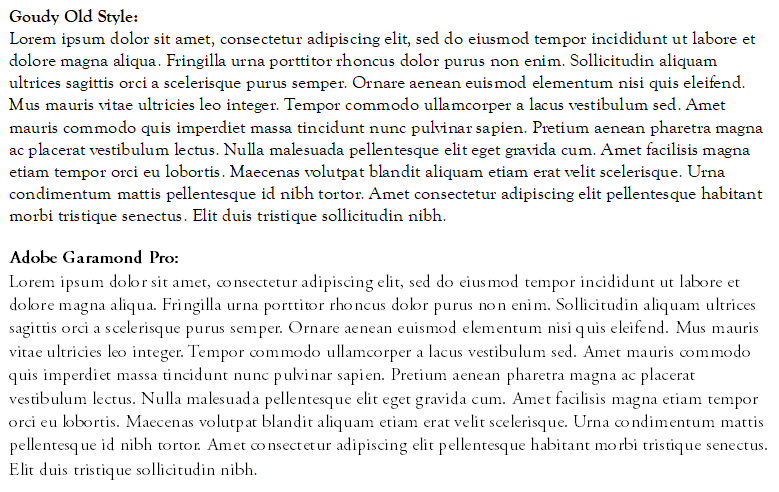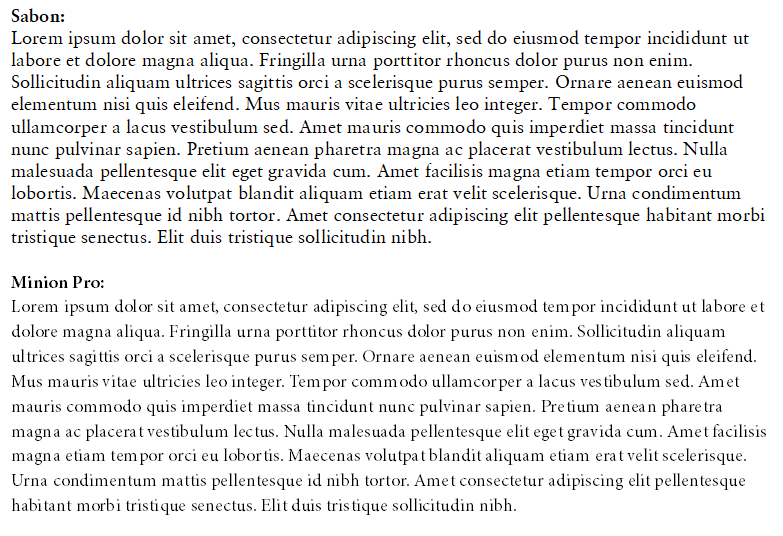Just-B has pretty much said verbatim what I’d have said. Salon is a lovely font for text. A couple more I’d add to the list are Bembo and Baskerville.
That said, there are many other beautiful and legible body text fonts. If you can, pick one with a book version (as Bembo does).
However, the choice does come down to more than just legibility and readability (not, in any way, to sideline their importance). The other hugely critical factor, that Just-B touched upon, is the personality of the book. The tone of voice of the font needs to match the timbre of the text itself.
For example, to use very broad brush strokes to illustrate the point, a book about, say, a spate of late Victorian murders in foggy London will have a very different tone of voice to one about the taxonomy of alpine mosses.These are pretty diverse examples and of course, there is everything in between.
It depends also on the demographics of the targeted readership. The requirements for a book aimed at 15-year old girls is very different to that of middle-aged men.
Also, it’s it a text book, or trade?
Chosimg the correct font to match these criteria can be critical, or at least material, to the book’s success.
I am in the middle of designing a book at the moment. Between the author, project manager and publisher, we tried visuals out in around five or six different fonts (only after hours of my testing and selecting these front-runners) before we settled on the right one to hit the tone of voice the author intends – and this is an author I know well, as I’ve designed his non-fiction, illustrated titles for a good few years now.
I hope this doesn’t scare the living daylights out of you, but, as you can see, font / typeface choice is a far more subtle process than a simple A-B-C drop-down menu choice. There are many more factors governing it than most people even realise.
Typography for books is all about getting the thoughts, words and emotions from the author’s head to yours as seamlessly as possible. As Adrian Frutiger once said – and regularly over-quoted by type-geeks like me…
‘If you remember the shape of your spoon at lunch, it has to be the wrong shape…’
Hope this helps. Good luck.

